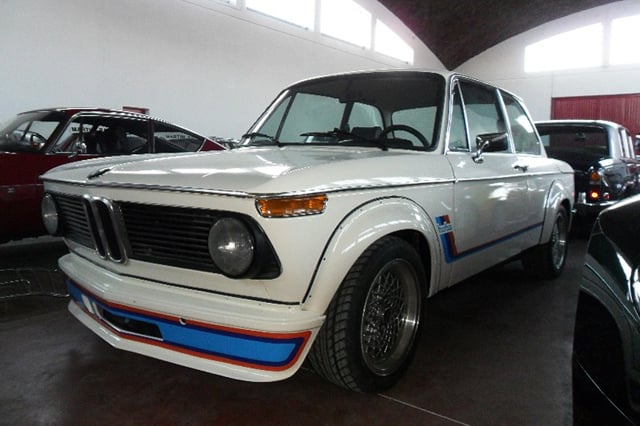That 70s Show



Though turbocharging was first seen in production cars in the 60s, it was the 70s that saw the technology applied to more performance-orientated machinery. Its nature was very much ‘wait for it… wait for it…. HERE YOU GO!’, but the sheer anarchy unleashed once the seemingly never-ending lag had subsided served as justification to many.
Its application in the Porsche 911 is one of legend; first seen (and often referred to by its internal ‘930’ designation) in 1975, the Turbo has since become a mainstay in the 911 family. The first iteration was certainly a handful, as drivers had to negotiate the unpredictability of the spool-up, while tempering the oversteer often initiated by the engine position, short wheelbase and rear-wheel drive.
As with the 930, its 924 Turbo cousin and the BMW 2002 Turbo both have their development deep-rooted in motorsport. After success in turbocharging some of its racing cars, Porsche equipped the 924’s 2.0-litre inline-four with a turbocharger to bridge the performance gap to the 911. A similar pattern of events had taken place earlier with the 2002 Turbo; after a 1969 European Touring Car Championship win, 1972 saw a production version of the 2002 Turbo released. Its 2.0-litre inline-four was essentially a detuned version of that found in the 1972 BMW Turbo concept car – this made it the first turbocharged European car to go into series production.
See the adverts in the Classic Driver Marketplace: Porsche 911 (930) 3.0 Turbo, Porsche 924 Turbo, BMW 2002 Turbo
Power to the People: The 80s



With the dawn of the skirmish for supercar supremacy, Porsche and Ferrari both turned to turbocharging for their would-be Group B monsters. Ferrari’s efforts saw the 308 GTB’s engine rotated, re-sleeved (to give a smaller bore size) and equipped with a pair of turbos, allowing the resulting 288 GTO to nestle neatly within Group B regulations while offering earth-shattering performance. Meanwhile, Porsche’s 959 used twin-turbo motivation mated to a complex four-wheel-drive drivetrain – a marriage later revisited by every 911 Turbo from the 993 onwards. The sequential arrangement of the 959’s turbos eliminated much of the lag experienced by its predecessors.
It wasn’t just the big boys playing the turbo field though; midway inside the Gandini-styled widebody shell of Renault’s ‘R5 Turbo’ lay a blown 1.4-litre inline-four. Initially intended to replicate the rallying success of the similarly mid-engined Lancia Stratos, the homologated R5 Turbo soon drew a cult following from younger generations, who saw it as a way to access this new type of power extraction without sacrificing their first mortgage.
See the adverts in the Classic Driver Marketplace: Ferrari 288 GTO, Porsche 959, Renault R5 Turbo II
Triggering Turbulence: The 90s Turbos



Arguably the first British supercar, it would be two decades before the Esprit was furnished with the engine it deserved. With double the cylinder count of its predecessors, Lotus’s compact, in-house-developed V8 and a supplementary pair of Garrett turbochargers made its way into the Esprit in 1996. A few years later, the Sport 350 – limited to 50 units – shed weight in order to boast a 0-62mph sprint of 4.3 seconds.
Next to Bugatti’s torch-holder of the era, the Esprit’s 350bhp seems paltry. The EB110 had the same 3.5-litre capacity, yet managed to produce upwards of 550bhp (and 600bhp in SS form) thanks to its dozen cylinders and quartet of turbochargers. It might not have been enough to save the company from a second financial collapse, but it certainly wowed those lucky enough to drive one.
Bentley first revisited the ‘Blower’ theme back in the mid-80s, and by the early 90s the 6.75-litre V8 had gained fuel-injection for its application in the Turbo R, and was now paired with a four-speed gearbox. While the performance was impressive (Bentley claimed 320bhp in an uncharacteristic release of the official figures), it was perhaps the first time forced induction had been seen in such an anti-anarchic application. But never underestimate the sheer driving pleasure of these managing directors' go-karts.
See the adverts in the Classic Driver Marketplace: Lotus Esprit Sport 350, Bugatti EB110, Bentley Turbo R
Enough is Enough: The Millennial Set



Those who assumed the EB110 escapade and subsequent collapse would be the final chapter in Bugatti folklore were in for a surprise; not only did VW’s resurrection of the name return to quad-turbo assistance, but the Veyron had 16 cylinders amounting to a total capacity of eight litres. This endowed it with 987bhp – which has since risen to 1183bhp in Grand Sport Vitesse – an output which the new generation of hypercars can only achieve with the aid of electric stimulation.
In more stately applications, twin-turbocharging was the order of the day for both the newly revived Maybach and the Bentley Arnage. However, in hindsight it seemed to be a curse; Daimler finally pulled Maybach’s shutters down after years of poor sales, while the Arnage became entangled in an engine dispute between bitter rivals VW and BMW. As a result, Bentley reverted to the old 6.75-litre V8 with a single turbo for the Red Label, and many aficionados thought it all the better for that.
See the adverts in the Classic Driver Marketplace: Bugatti Veyron 16.4, Maybach 57, Bentley Arnage T Red Label Le Mans
Photos: Classic Driver dealers















